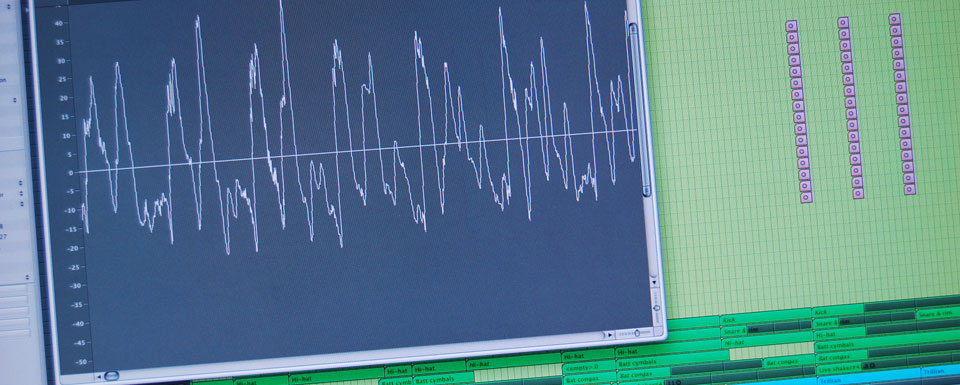Now, click to watch our video at our sister site (or read on) ..
This article outlines the 6 primary audio signal types.
NOTE: The diagrams shown on this page are simplified waveform diagrams.
Pulse waves
Digital audio signals ...
... are very quiet to allow them to move quickly between computer components and create as little heat, through friction (resistance) as possible. They are pulse waves, employing rising and falling amplitude to represent 1s and 0s.

SMPTE signals ...
... are created digitally inside a SMPTE generator device and then amplified (modulated) to the level of an audio line level signal in order to be recorded onto audio tape. (Old computer games employed the same system to load and save data to cassette recorders when disc drives were still too expensive for consumers).

Audio / line level pulse waves ...
... can be created by a synthesisers oscillators and used as an effective sound source to create such sounds as pianos and basses.

Mic level
Mic level signals are created by microphones. They are quiet (up to 0.0775 volts or -20dBu) and usually need the protection of a balanced cable. When they reach a mixer or hi-fi amp, they are amplified to line level by a pre-amp. Record decks also create mic level like signals, but these differ in a number of ways and must be connected to a phono preamplifier which converts them to line level.

Instrument level
Instrument level signals are primarily created by electric bass and guitar pickups and have a higher level and impendence (Z) then mic level signals.

Line level
Line level signals are much louder than mic and instrument signals (up to 2.45 volts or +30dBu) and therefore do not always need the protection of a balanced cable. Line level signals are the most common audio signals and are produced by ...
- Keyboards
- Samplers
- Synthesisers
- Drum machines
- Tape recorders
- CD players
- DVD player
- FX and outboard processors
- Mixers
- Soundcard's / audio interfaces
- MiniDisc players
- DAT recorders
- etc

Speaker level
Speaker level signals are very loud in order to power the magnets which move the cones.


